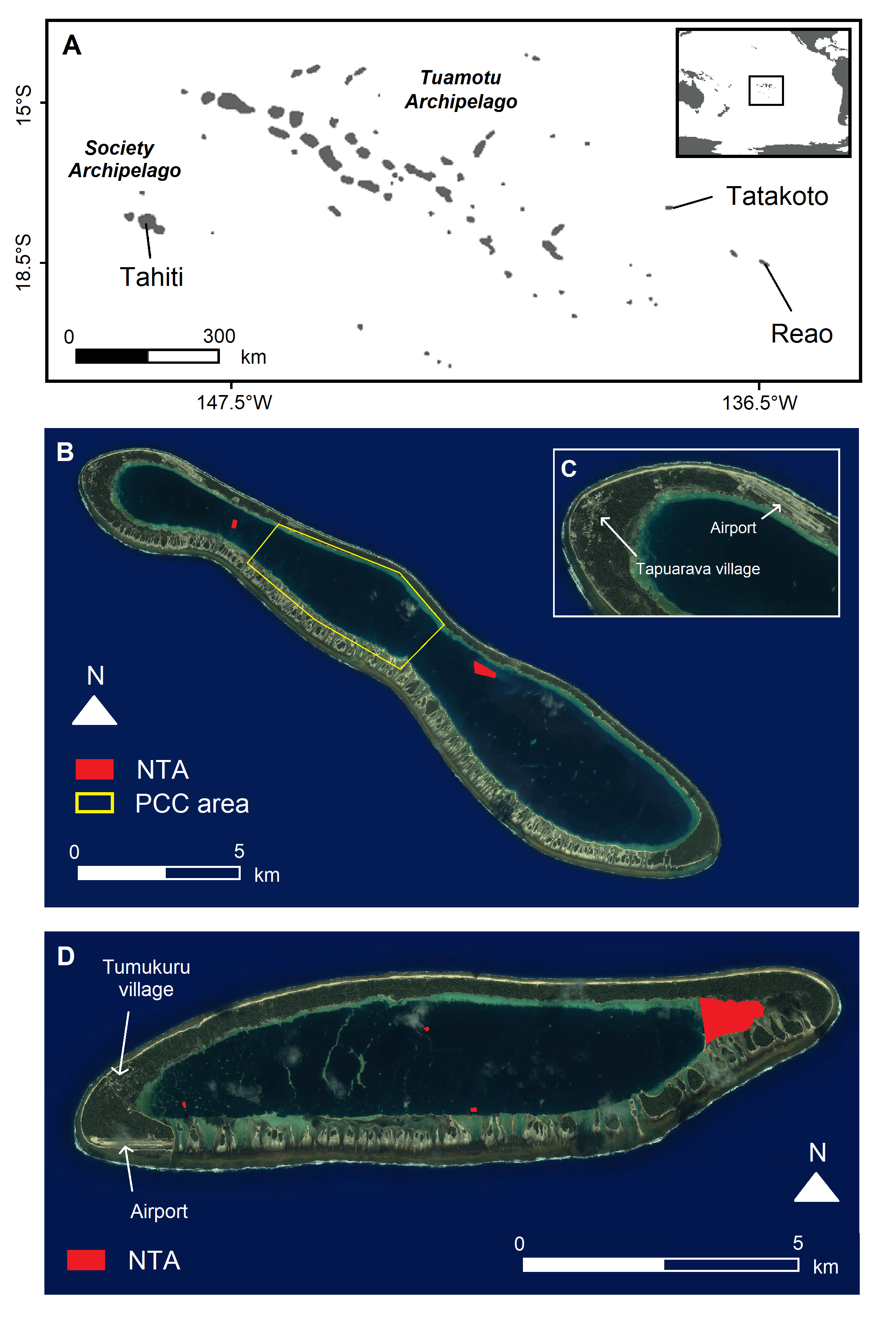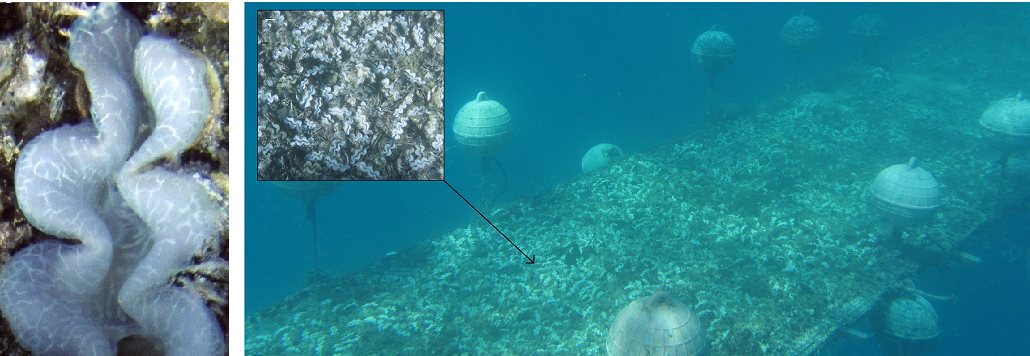GAIA Project
ManaGement strAtegy evaluatIon for small-scale fisheries in Atoll lagoons (GAIA)
The ability of Oceanic fisheries to persist under climate change is uncertain, and will depend on their ability to implement management strategies that are robust to long-term change. As with other semi-enclosed atolls in the Tuamotu Archipelago, high densities of Tridacna maxima clams characterize the Reao and Tatakoto lagoons. This resource provides the islanders with significant income, through fishing for the meat market and the collection of spat for the aquarium market. However, these activities have shown signs of vulnerability to high temperatures, which raises questions about their sustainability. Different management measures have been implemented in these two lagoons, but these generate inequalities between fishermen and aquaculturists, so that the capacity of these socio-ecosystems to support more stringent measures is currently uncertain. The assumption is that the management strategies currently in place will need to be adjusted in the future to remain as effective and socially acceptable as they are under the current temperature conditions. Indeed, these measures reorganize fishing pressure on areas or life stages that are more or less sensitive to temperature increase. In order to propose new management strategies, managers currently lack a quantitative assessment of the robustness of these strategies to temperature increase.
GAIA is an interdisciplinary project that evaluates the sustainability of socio-ecosystems in semi-enclosed atolls based on the exploitation of the clam resource, in a context of climate change. The three objectives of the project are (1) to characterize the vulnerability (exposure and sensitivity) of clams to temperature increase, (2) to assess the socio-economic cost of management measures to islanders and their potential to adapt to new regulations, and (3) to model clam population dynamics at the two sites in order to assess the effectiveness of current management strategies and to identify new measures to mitigate the effects of climate change.
GAIA is structured in 7 tasks (T). T1 is dedicated to coordination and T7 to dissemination. T2 & T3 aim to characterize the exposure and sensitivity of clams to temperature in the two lagoons. T4 will model the hydrodynamic functioning and larval dispersal of T. maxima at both sites, and T5 will identify sustainable management strategies with respect to the social structure of the populations in these atolls. Results from T2 to T5 will feed into T6, which will validate a new thermo-dependent and spatially explicit population model for T. maxima, and use this model to compare the effectiveness of different management strategies, and their robustness to increasing temperature.
The novelty of the GAIA project lies in its interdisciplinary approach, in the geomorphological configuration of the two study sites which has never been subject to hydrodynamic modeling before, but also in the new technologies that will be used. This project will produce useful results for the management of clam-dominated lagoons in Oceania, and may highlight the need for French Polynesia to adapt its long-term development strategy regarding clam exploitation (fishing and mariculture).

Figure 1: Study site. A) Location of Tatakoto and Reao in French Polynesia. B) Satellite view of Reao. C) Zoom on the village of Tapuarava in Reao. D) Satellite view of Tatakoto. NTA: No Take Area. PCC: Post-larval capture and culture (Area where clam spat collection is practiced).

Figure 2: Vulnerability of the clam industry. Left: A bleached clam following a heat wave in Reao in March 2016. Right: A clam spat collector on which all clams have bleached (Reao, 2016). Photographs are from Kabbadj et al. (2018)
https://doi.org/10.1016/j.marpol.2018.03.024.

